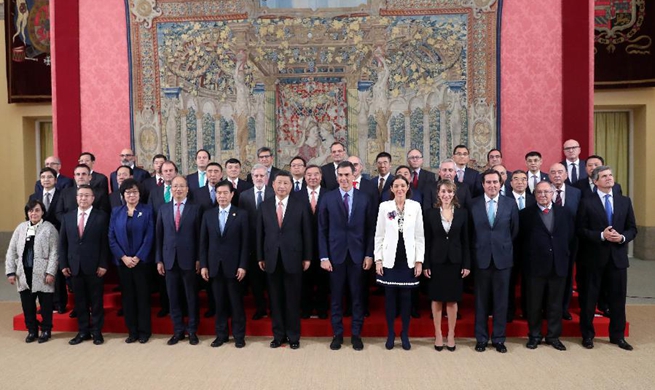NAIROBI, Nov. 30 (Xinhua) -- The burden of malnutrition across the world remains high and the progress to eradicate the menace is dragging, with Sub-Saharan Africa carrying the highest burden, says a report released on Thursday.
The 2018 Global Nutrition Report indicates that several countries globally are struggling with three forms of malnutrition, namely stunting in children, anemia and overweight.
The report notes that while stunting in children under five is declining at a global level, the numbers in Africa are increasing.
"Africa is the region by far the hardest hit by overlapping forms of malnutrition. Of 41 countries that struggle with three forms of malnutrition - childhood stunting, anemia in women of reproductive age and overweight among women - 30 are in Africa or 73 percent," says the report.
According to the report, stunting declined from 32.6 percent of all the world's children under five years of age in 2000 to 22.2 percent in 2017. In numbers, this is a decline from 198.4 million to 150.8 million.
The report further shows an overall increase in both overweight and obesity in Africa as the region undergoes "significant growth in consumption of packaged foods."
A country was considered "burdened" by a malnutrition indicator depending on whether the national prevalence was greater than a certain cut-off.
"Stunting was measured in children aged under five and its burden limit was 20 percent or more. Anemia among women of reproductive age (15-49 years) had the same 20 percent or more cut-off, and for overweight women (18+), this was 35 percent or more," says the report.
According to the study, children under five years of age face multiple burdens: 150.8 million are stunted, 50.5 million are wasted and 38.3 million are overweight.
"Meanwhile, 20 million babies are born of low birth weight each year. Overweight and obesity among adults are at record levels with 38.9 percent of adults overweight or obese, stretching from Africa to North America, and increasing among adolescents," the report says.
Women have a higher burden than men when it comes to certain forms of malnutrition: one third of all women of reproductive age have anemia and women have a higher prevalence of obesity than men. Millions of women are still underweight, it says.
Corinna Hawkes, the co-chair of the report and director of the Centre for Food Policy, observed that the figures call for immediate action.
"Malnutrition is responsible for more ill-health than any other cause. The health consequences of overweight and obesity contribute to an estimated 4 million deaths globally. The uncomfortable question is not so much "why are things so bad?" but "why are things not better when we know so much more than before?"
Henrietta Fore, executive director of the UN Children's Fund (UNICEF), said the report offers forward-looking steps to strengthen the ability of global and national food systems to deliver nutritious, safe, affordable and sustainable diets for children.
"This paradigm shift - food systems that contribute to prevent malnutrition in all its forms - will be critical for children's growth and development, the growth of national economies, and the development of nations," she said.
However, while Africa is the hardest hit, the report noted that several countries in the continent have joined in the world to take steps to reduce malnutrition, which can act as models and catalysts of change.
"Our 2018 assessment of progress against nine targets, which includes new data points from 32 countries, reveals that 94 of the 194 countries included are on track for at least one nutrition target, with 44 of these on track to meet one target and 35 on track to meet two," the report says.
David Beasley, executive director of World Food Programme, said that the information in the report goes far beyond facts and figures.
"What is really behind these tables and graphs are stories of potential: the potential of more babies seeing their first birthdays, of children achieving their potential in school and of adults leading healthy and productive lives - all on the foundation of good nutrition," he said.
"The information collected, analyzed and shared in the Global Nutrition Report is never an end in itself, but a means that allows us to save lives, change lives and ensure that nobody is left behind," he said.
Lawrence Haddad, executive director of Global Alliance for Improved Nutrition (GAIN), on the other hand, said that ending malnutrition is a choice and the report calls on everyone to make bold and informed decisions.
"Even more importantly, the report makes it uncomfortable to persist with indifference, complacency and inaction when it comes to ending malnutrition," he said.












